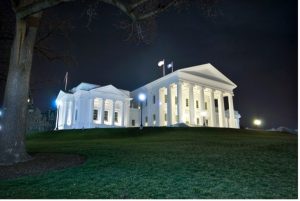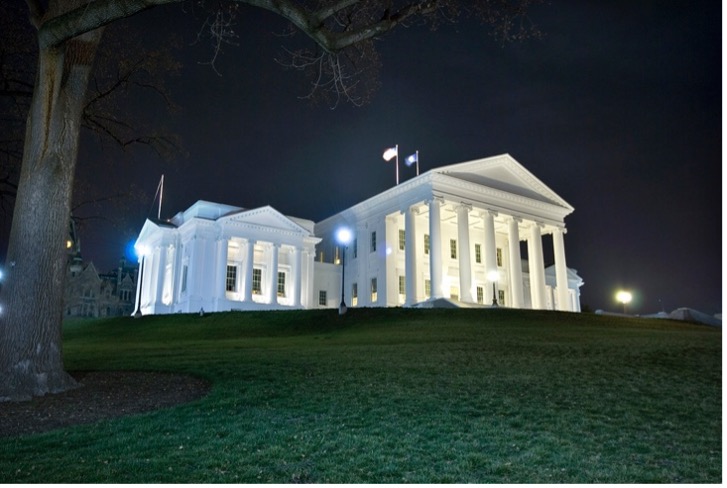By Eleni Poulos
Public policy is generally understood as what the legislative branch of a government creates in the form of laws and regulations as the response to a public problem.[1] Public policy is created through legislative bodies and for centuries has been the result of grassroots advocacy, lobbying efforts, and constituent pressure. Often public policy processes follow the same custom it has for decades, after all it is a country’s regulatory system and consistency is often necessary for stability.
In comparison, technology has continued to change processes in all sectors.[2] However, it has lagged in its efforts to infiltrate the development and implementation of public policy.[3] One issue that naturally arises is the discrepancy between the rate in which technology is evolving and policy makers’ inability to ensure the legislation and regulations keep up.[4] However, despite this slow integration, technology and public policy actually have the ability to work seamlessly together. [5]
Most importantly, as the tech industry continues to grow, it will require better policies that will allow the industry to grow and prosper.[6] This means that the tech industry leaders will need to work with public policy makers—legislators and lobbyists—to ensure that the public policies reflect this expansion throughout society.[7] For example, as technology expands into spaces such as corporate workplaces and the car industry, it is important that the policy makers pass legislation that will be conducive to supporting the evolution of these technologies. To do so, the policy makers must understand the effects certain policies would have on the tech industry. And to do that, it will require leadership in both sectors to work together. Leaders in technology also see a need for better policies regarding artificial technology.[8] Though that is just the beginning, as “we need policy around the rapidly advancing technologies of bioengineering, such as genome edition and synthetic biology.”[9] To bridge this gap, leaders in the industry believe introducing public policy to those interested in technology and science at a younger age is the first step.[10]
Another reason technology should be better integrated into society is its ability to assist policy makers in the development process of all public policies—not just those associated with the technology industry.[11] More technology in the process could produce more thoroughly researched and data-driven policies.[12] A recent report by the Institute for Research on Public Policy (IRPP) and the Canadian Academy of Engineering (CAE) detailed how government can better utilize technology to create a more streamlined process in policy making.[13] “As governments grapple with evermore complex policy problems, science and technology must play a bigger role in providing an evidence base for decisions and supporting government efforts to manage risk and uncertainty.”[14] Based off several cities in Canada, the report recommends using the increased accessibility to credible research through the internet and technology to inform the legislatures decision-making when forming policies.[15] Though the report concedes that scientific evidence and technology cannot be the only basis for forming a policy, as citizen concerns and budget considerations play an important role, the report argues it is important that public debate and policy making be informed by science produced by better technology.[16]
[1] What is Public Policy?, Project Citizen, https://www.civiced.org/project-citizen/what-is-public-policy.
[2] Lillian Ablon and Andrea Golay, How The ‘Wonks of Public Policy and The ‘Geeks’ of Tech Can Get Together, Tech Crunch (Mar. 17, 2016), https://techcrunch.com/2016/03/17/how-the-wonks-of-public-policy-and-the-geeks-of-tech-can-get-together/.
[3] Id.
[4] Bruce Schneier, We Must Bridge the Gap Between Technology and Policymaking. Our Future Depends on It, World Economic Forum (Nov. 12, 2019) https://www.weforum.org/agenda/2019/11/we-must-bridge-the-gap-between-technology-and-policy-our-future-depends-on-it/.
[5] Ablon and Golay, supra note 2.
[6] Id.
[7] Id.
[8] Schneier, supra note 4.
[9] Id.
[10] Id.
[11] Making Better Use of Science and Technology in Policy-Making, McGill (Mar. 23, 2016), https://www.mcgill.ca/channels/news/making-better-use-science-and-technology-policy-making-259854.
[12] Id.
[13] Id.
[14] Id.
[15] Id.
[16] Making Better Use of Science and Technology in Policy-Making, supra note 11.

Image source: “Virginia State Capitol Building” by Sky Noir is licensed with CC BY-NC 2.0. To view a copy of this license, visit https://creativecommons.org/licenses/by-nc/2.0/
